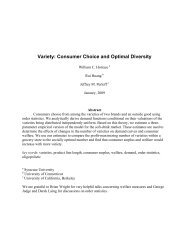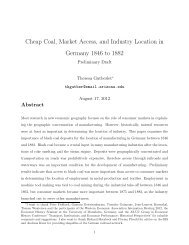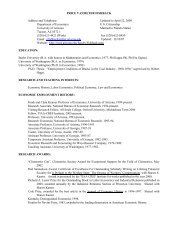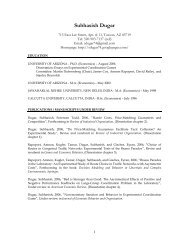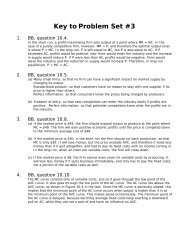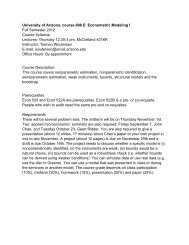A Dynamic Model of Demand for Houses and Neighborhoods
A Dynamic Model of Demand for Houses and Neighborhoods
A Dynamic Model of Demand for Houses and Neighborhoods
Create successful ePaper yourself
Turn your PDF publications into a flip-book with our unique Google optimized e-Paper software.
1 Introduction<br />
The purchase <strong>of</strong> a primary residence is both the largest single consumption decision <strong>and</strong> largest<br />
single investment made by the vast majority <strong>of</strong> US households; the typical household spends<br />
about 23 percent <strong>of</strong> its income on its house <strong>and</strong> its house constitutes two-thirds <strong>of</strong> its asset<br />
portfolio. 1 As a result, the housing market not only constitutes an important sector <strong>of</strong> the<br />
economy but also blends features <strong>of</strong> consumption <strong>and</strong> financial markets in unique <strong>and</strong> interesting<br />
ways.<br />
Relative to simpler consumption decisions, the home-buying decision is complicated by the<br />
sheer amount <strong>of</strong> money involved in the housing transaction <strong>and</strong> the associated transaction costs.<br />
The latter ensure that this decision is not easy to adjust; as a result, dynamic considerations<br />
(including the expected per<strong>for</strong>mance <strong>of</strong> the house as an asset <strong>and</strong> expected evolution <strong>of</strong> the prop-<br />
erty <strong>and</strong> neighborhood) play an important role in the decision. These dynamic considerations<br />
add to the complexity <strong>of</strong> an already complicated decision; ignoring dynamic considerations, that<br />
decision already incorporates choices over housing characteristics, commuting time, local schools,<br />
crime, <strong>and</strong> other neighborhood amenities into a single decision.<br />
As opposed to many st<strong>and</strong>ard financial instruments, the existence <strong>of</strong> large transaction costs,<br />
the predominance <strong>of</strong> owner-occupancy in large segments <strong>of</strong> the market, <strong>and</strong> the inherent difficulty<br />
<strong>of</strong> holding short positions limit the ability <strong>of</strong> pr<strong>of</strong>essionals to eliminate pricing inefficiencies in<br />
the housing market. As a result, housing prices exhibit time-series properties at both high<br />
<strong>and</strong> low frequencies that are inconsistent with the st<strong>and</strong>ard implications <strong>of</strong> the efficient market<br />
hypothesis. In particular, previous research has consistently documented that prices exhibit<br />
positive persistence (inertia) in the short-run (annually) <strong>and</strong> mean reversion in the longer run<br />
(five years). 2 This predictability <strong>of</strong> changes in house prices further motivates the need <strong>for</strong> a<br />
dynamic analysis <strong>of</strong> individuals’ location decisions.<br />
In this paper, we develop an estimable model <strong>of</strong> the dynamic decision-making <strong>of</strong> individual<br />
1 According to the American Household Survey in 2005, the national median percentage <strong>of</strong> income spent on<br />
housing was 23 percent. Tracy, Schneider, <strong>and</strong> Chan (1999) report the portfolio share figure.<br />
2 A great deal <strong>of</strong> empirical research documents <strong>and</strong> explores these aspects <strong>of</strong> housing market dynamics. See,<br />
<strong>for</strong> example, Abraham <strong>and</strong> Hendershott (1996), Capozza et. al. (2002), Case <strong>and</strong> Mayer (1995), Case <strong>and</strong> Shiller<br />
(1989), Cho (1996), Clayton (1997), Englund, Gordon <strong>and</strong> Quigley (1999), Gelf<strong>and</strong> et. al. (2004), Himmelberg,<br />
Mayer, <strong>and</strong> Sinai (2005), <strong>and</strong> Lamont <strong>and</strong> Stein (2004).<br />
2



